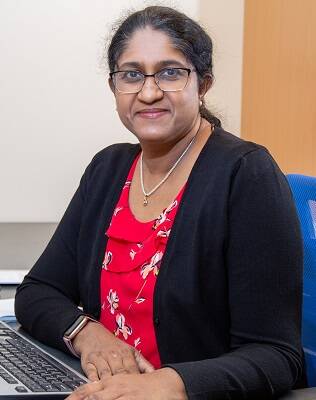Be breast cancer aware

This month is Breast Cancer Awareness Month, the time when the spotlight is turned on one of Australia's most common cancers. In one of a series of articles from Mandurah's Peel Health Campus (PHC), part of Ramsay Health Care, aimed at keeping our community healthier, PHC breast surgeon Dr Bindu Kunjuraman gives some tips on how to do a breast check.
Next year around 2000 Western Australians are expected to be diagnosed with breast cancer.

The sad reality is that today most of us would have been touched in some way or another by breast cancer. Maybe you, a sister, your mother, aunty, daughter or a friend have been affected.
These numbers are scary. But the good news is that the breast cancer survival rate for cases diagnosed early is high. In Australia the overall five year survival rate for breast cancer in women is 90 per cent.
So in October during Breast Cancer Awareness Month it's important for everyone to commit to taking the steps available to help catch the disease early.
That of course starts with knowing the symptoms to be aware of, doing your own breast check and, if you're over 50, or in a risk group, making sure you take part in the screening program operated by Breast Screen WA.
Symptoms
People with breast cancer often report that they "felt a lump" but it's important to note that there are many other symptoms or warning signs to watch for. They can include:
- a new lump in your breast or underarm
- thickening or swelling of part of your breast
- irritation or dimpling of your breast skin
- changes in the skin similar to texture of orange rind
- redness or flaky skin in your nipple area area or breasts
- pulling in of your nipple or pain in your nipple area
- nipple discharge other than breast milk
- any changes in the size or shape of the breast
Self examination
Doing your own breast check is easy - it's just remembering to do it that's hard. Try making it a part of a regular routine.
Everyone's breasts look and feel different. You may have lumpy breasts, one breast larger than the other, breasts that are different shapes, or one or both nipples that are inverted. Become familiar with the normal look and feel of your breasts.
There's no right or wrong way to check your breasts. You can do this in the bath or shower, when you use body moisturiser, or when you're getting dressed, whatever suits you.
Start by looking at your breasts in the mirror with your shoulders straight and your arms on your hips. Look for whether your breasts are their usual size and shape.
Then raise your arms and look for the same changes.
While you're at the mirror, look for any signs of fluid coming out of one or both nipples (this could be a watery, milky, or yellow fluid or blood).
Next, feel your breasts while lying down, using your right hand to feel your left breast and then your left hand to feel your right. Use a firm, smooth touch with the first few finger pads of your hand, keeping the fingers flat and together. Use a small circular motion.
Cover the entire breast from top to bottom, side to side, from your collarbone to the top of your abdomen, and from your armpit to your cleavage.
Follow a pattern to be sure that you cover the whole breast. You can begin at the nipple, moving in larger and larger circles until you reach the outer edge of the breast. You can also move your fingers up and down vertically, in rows, as if you were mowing a lawn.
Finally, feel your breasts while you are standing or sitting. Many women find the easiest way to do this is when their skin is wet and slippery so like to do this step in the shower. Cover your entire breast, using the same hand movements described in the previous step.
Most breast changes are not likely to breast cancer. However, if you do find a change that's unusual then see your GP without delay.
They will do their own check and if they have concerns they will organise for you to have a mammogram. If the scan finds some abnormality your GP can refer you to a breast specialist at Peel Health Campus.
Everybody is so busy these days but it's well worth taking the time to make sure you are paying attention to yourself. It could be the most important few minutes you spend.
PHC has a McGrath Foundation Breast Care Nurse located on site every Tuesday and Thursday to provide essential physical and emotional support free of charge to anyone experiencing breast cancer and their families, from diagnosis and throughout their treatment. Breast Care Nurse Moira Waters provides regular advice and support to PHC Campus and the whole community. For more information contact Moira by phoning (08) 9531 8000 or email her at WatersM@ramsayhealth.com.au
This is sponsored content for Peel Health Campus, part of Ramsay Health Care.


